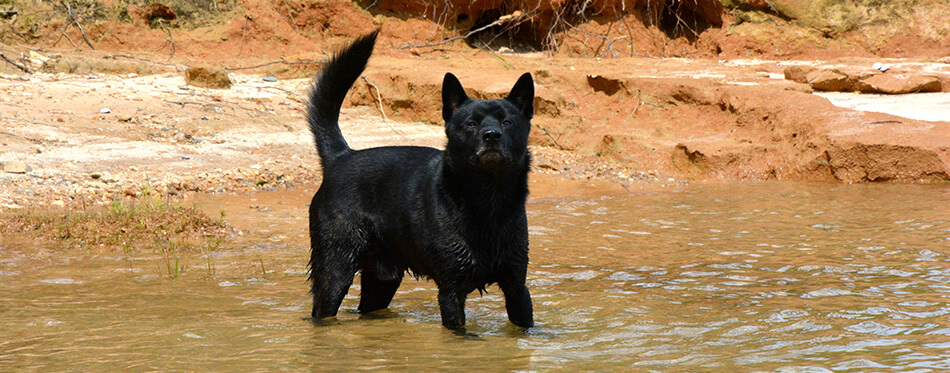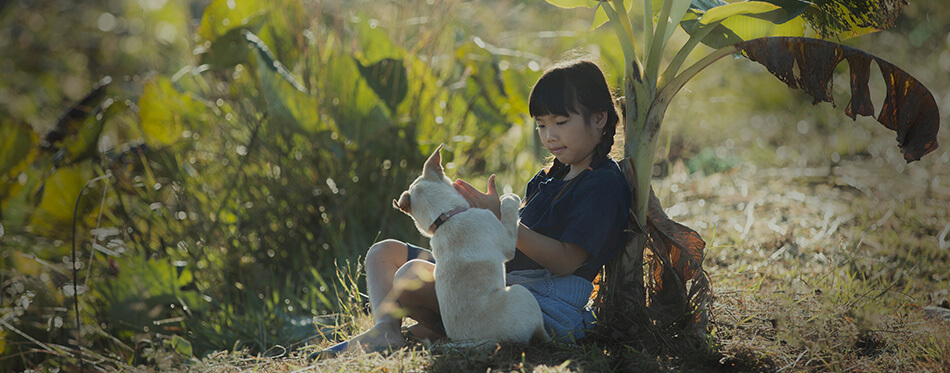Unless they have been spayed, from around six months old a female dog will go into heat roughly every six months. Heat – or estrus – is the canine equivalent of a woman’s reproductive cycle and is when your pet is receptive to mating. We take a look at the estrus cycle to discover just what happens to your pooch’s body and how long they remain on heat.
What Does it Mean When a Dog is in ‘Heat’?
When your female dog goes into heat, it means that their body is preparing to mate and fall pregnant. Also known as estrus, heat sees a female dog’s estrogen levels rise and then dramatically decrease, causing her ovaries to release eggs, ready for fertilization. It is at this point, that your ovulating dog is most receptive to mating.
A dog will go into heat for the first time from between six months old and one year of age, with smaller dogs starting their estrus cycle sooner than large breed dogs. When it comes to how often do dogs go into heat, this cycle continues roughly every six months unless they are spayed – a veterinary procedure which means they no longer go into estrus and cannot have puppies.
Unlike human females who eventually go into the menopause and no longer ovulate, dogs don’t. The ovulation rate does drop as they get older, but it doesn’t stop completely, says the American Kennel Club, meaning older dogs can still fall pregnant, which can be life-threatening for both mum and her litter.

Signs Your Dog is in Heat
If you haven’t had your pooch spayed then you can expect her to come into ‘season’, which will bring some temporary physical as well as behavioral changes. One of the first signs you have a dog in heat is a change in her personality due to the shift of hormone levels.
These include being more jumpy or nervous and well as being distracted, or on high alert. Her tail may also be pushed to one side and her hind legs become tense; you may also find she is raising her rear end towards any male dogs nearby. Physical signs your dog is ovulating include a bloody vaginal discharge and a swollen vulva.
How Long do Female Dogs Stay in Heat?
A typical estrus cycle lasts for between 21 and 28 days, averaging out at about three weeks although this does depend on the dog breed, age and size. In younger dogs, it can also take a while for their cycle to settle down into a more regular pattern. Smaller breeds can go into heat up to four times a year, while with very large breeds, it could be as infrequent as every 12-18 months.
But your dog doesn’t have the same level of fertility or drive to mate throughout each heat cycle, as estrus is actually split into four distinct stages.
The Four Stages of the Heat Cycle in Dogs
Understanding the four stages of the heat cycle will enable you to know how long your pet can stay in heat and when she is at her most fertile, helping you to safely manage her throughout. The four stages are proestrus, estrus, diestrus and anestrus.
1. Proestrus
The first stage of your dog’s heat cycle, this is where she is going into heat and you will see behavior changes, such as acting more alert, appearing nervous or on edge. She may also display a stiffened tail, held close to her body, which is an indication she does not want to be mated just yet. This also means she can be reactive and a little short-fused when around a male dog and her vulva will start to swell, leading to some initial discharge.
2. Estrus
By the time female dogs enter the second stage of their heat cycle, they are much more willing and ready to mate and will actually start flaunting her rear end to other dogs and fan her tail to spread those ‘come and mate with me’ pheromones around. During the estrus stage, you will see your dog’s vaginal discharge change to a lighter brown, and she may also start urinating more frequently than normal.
3. Diestrus
The final stage of your dog’s heat cycle is called diestrus and this is where her hormones are calming down, and she is showing little interest in mating. During diestrus her vaginal discharge slows down, then stops and her swollen vulva returns to normal. It is during diestrus that your dog’s body is either progressing with a pregnancy or settling back into its out of heat season rhythm.
4. Anestrus
When your female dog is not in her active estrus reproductive cycle, she is known to be in anestrus. This is the time between each full heat cycle where her body is repairing and preparing for the next estrus and the onset of hormones and sexually active behavior.

How to Manage Your Female Dog in Heat
Your dog needs care and attention during their heat cycles, especially if you are not a breeder or have no intention of letting her get pregnant. And, even in their first heat cycle, a dog can get pregnant, which is not advisable for such young dogs.
Whatever your dog’s age, if she is unspayed, then the most important thing is to keep her away from other dogs, especially males, as her pheromones are on turbo-charge and she will draw them in like a magnet. Don’t neglect her daily exercise however, although she should be under close control, on a dog leash, and even supervised when in your garden or yard.
During her estrus or heat cycle when she will be discharging, your female dog will want to lick and groom herself; you could also consider doggy pants or diapers to prevent your furniture getting stained. And when she does stop bleeding, you still need to be vigilant for a little while longer as she can stay in heat and still get pregnant.
You May Also Like: Dog Diapers
The Benefits of Spaying
It is totally natural for your dog to be in heat, and if you plan to breed then managing her estrus cycle is essential. But for most pet parents, spaying your dog at an early stage is the best way to avoid unwanted pregnancies. The ideal time to get your dog spayed is before their first heat cycle, although no sooner than six months of age.
Veterinarian experts recommend spaying your female dog as it also has a host of health benefits, including helping to protect against breast cancer and potentially leading to a longer lifespan for your pet. So, if you want to prevent unwanted puppies, support your female dog’s health and avoid the stress and mess of your dog regularly going into heat, then have a chat with your vet to explore all your options.

